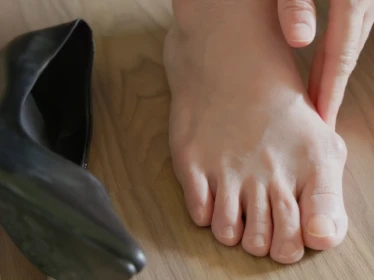
Sinus infections are often seen as minor nuisances, with many people assuming they will clear up on their own with rest or simple over-the-counter (OTC) medication. While this is true for some, there are also cases where infections keep coming back or never fully go away, leaving those suffering from it to wonder if there is a more lasting solution. This is when questions about how to cure sinus permanently naturally arise, especially for those who live with blocked noses, facial pressure, and sinus headaches for weeks or even months at a time.
For patients caught in this cycle, it is important to recognise that long-term or recurrent sinus problems are not always caused by a simple infection. When symptoms do not improve with medication or they return soon after treatment ends, it may be a sign of chronic sinusitis or other underlying conditions affecting the sinuses. At this point, it becomes necessary to look beyond temporary fixes and consider whether a more permanent approach, such as sinus surgery, could help restore proper sinus function and reduce the potential of future infections.
Before making that decision, it helps to first understand what sinusitis actually is and how it progresses from short-term discomfort into a more persistent medical condition. This understanding lays the groundwork for exploring when surgery might be needed and how it fits into the broader approach to curing sinus problems permanently.
What is Sinusitis?
Firstly, let’s talk about the sinuses themselves. These are air-filled cavities located around the eyes, nose, and forehead, within the front part of the skull. Each sinus is lined with soft tissue that produces mucus, which helps trap dust, pollutants, and microorganisms before they enter the lungs. The mucus normally drains into the nasal passages, where it is either swallowed or expelled.
When these sinus linings become inflamed or swollen, the natural drainage process is disrupted. Mucus builds up within the cavities, creating pressure and discomfort. This condition is known as sinusitis.
Sinusitis can affect anyone and may occur for different reasons, ranging from infections to structural abnormalities. In some cases, it lasts only a short time before clearing up on its own or with simple treatment. However, when symptoms persist for more than 12 weeks despite appropriate care, the condition is classified as chronic sinusitis.
Causes and Symptoms of Sinusitis
There are several possible causes of sinusitis, though infections are among the most common triggers. In many cases, sinusitis begins after a viral infection, such as the common cold (influenza), where the virus causes inflammation in the nasal passages and sinuses. When this inflammation disrupts normal mucus drainage, the sinuses become blocked, leading to a build-up of mucus that creates a favourable environment for further infection.
While viral infections are the leading cause, bacterial infections can also contribute to sinusitis, particularly if symptoms persist longer than expected or worsen after a few days. Beyond infections, other factors can also lead to sinus inflammation. Allergic rhinitis, also known as hay fever, can trigger swelling in the nasal lining that blocks sinus drainage, increasing the risk of developing sinusitis. Structural issues, such as nasal polyps or a deviated nasal septum, can further obstruct proper drainage, making some individuals more prone to recurrent or chronic sinusitis.
As for symptoms, sinusitis can present with a variety of signs that often overlap with other upper respiratory conditions. Some of the most common ones include:
• Nasal congestion or blockage, making it difficult to breathe through the nose
• Thick, yellow or greenish mucus from the nose or dripping down the throat (postnasal drip)
• A sensation of pressure or pain around the eyes, cheeks, forehead, or nose
• Headaches, particularly around the forehead or between the eyes
• Ear pressure or a feeling of fullness in the ears
• Cough, which may worsen at night
• Occasional fever, especially in bacterial infections
• Bad breath, even after brushing
• Persistent fatigue, particularly with chronic sinusitis
Because these symptoms can range from mild to severe, and may overlap with other conditions like colds or allergies, it is important to monitor how long they last and whether they improve with time or treatment. Persistent symptoms lasting several weeks may indicate the need for further evaluation.
When is Sinus Surgery Needed?
If sinus symptoms persist despite medical treatment, there are cases where sinus surgery becomes the most appropriate option. Surgery is typically recommended when ongoing inflammation, infections, or structural issues prevent the sinuses from draining properly, even after medications, nasal rinses, or other treatments have been tried.
Sinus surgery may be considered if:
• You have chronic sinusitis, where symptoms for several weeks despite treatment
• Medications, nasal rinses, and other therapies do not provide lasting relief
• You have nasal polyps or abnormal tissue growth blocking the sinuses
• A fungal sinus infection is present and it does not respond to antibiotics
• An infection has spread beyond the sinuses, posing a risk to surrounding structures
In such situations, surgery aims to address these underlying problems, helping to clear blockages and restore normal sinus drainage. Depending on the cause of your symptoms and the anatomy of your sinuses, different surgical approaches may be recommended to achieve these goals. Here are two types of sinus surgeries:
Functional Endoscopic Sinus Surgery (FESS)
FESS is a minimally invasive procedure performed using a thin, flexible endoscope inserted through the nostril. This allows the surgeon to see inside the nasal passages and sinuses without the need for external incisions.
During the procedure, specialised instruments are used to remove nasal polyps, scar tissue, or other obstructions that are blocking the natural drainage pathways. By clearing these blockages and enlarging the openings, FESS helps restore normal airflow and mucus drainage, which can reduce the risk of future infections and improve overall sinus function.
Balloon Sinuplasty
Balloon sinuplasty is another minimally invasive surgical procedure, often recommended for patients with chronic sinusitis linked to narrowed or blocked sinus openings. Instead of removing tissue, this procedure uses a small, flexible balloon catheter that is gently inserted into the blocked sinus passage.
Once in position, the balloon is carefully inflated, widening the passage and improving sinus drainage. The balloon is then deflated and removed, leaving the sinus opening wider than before. Because no tissue is cut or removed, balloon sinuplasty is generally associated with a quicker recovery compared to more invasive procedures.
For Serious Sinus Issues, Visit an ENT Specialist
In many cases, sinusitis can be managed with medications, nasal rinses, or other non-surgical treatments. However, if symptoms persist beyond seven to 10 days or keep returning after temporary relief, it may be advisable to consult an Ear, Nose, and Throat (ENT) specialist for further evaluation.
As mentioned earlier, when symptoms continue for extended periods or come back repeatedly, it may suggest underlying issues affecting how well the sinuses drain. Identifying the cause through a thorough assessment provides clearer insight into why symptoms persist and what options may help manage them better.
Getting to the root of the problem is often the first step towards improving day-to-day comfort. At Nobel ENT Centre, Dr Leong Hoo Kwong, Consultant ENT Surgeon, sees patients at Gleneagles Medical Centre, where he provides evaluation and care for a range of sinus-related conditions. With clearer answers and an individualised care plan, patients can make more informed decisions about managing their long-term sinus health.




